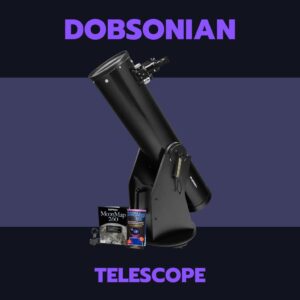This site contains affiliate links to products. I may receive a commission for purchases made through these links.
If you’re like me, you’re captivated by the celestial wonders that grace our skies. From meteor showers that light up the night, to awe-inspiring lunar and solar eclipses, there’s always something fascinating happening overhead. In this article, I’ll be your guide to seasonal sky watching, giving you the lowdown on the best times to see these incredible events.
Whether you’re an amateur astronomer or just someone who appreciates the beauty of the cosmos, you’ll find this guide invaluable. I’ll not only tell you when these events are happening, but also the best places to view them and tips on what to look out for. So, grab your telescope, let’s dive into the world of seasonal sky watching.
Remember, astronomy is not just for scientists, it’s for anyone who’s ever looked up at the night sky and wondered. So, join me as we explore the cosmos together.
Meteor Showers: A Celestial Light Show
No matter where you live, the sky offers a stunning array of cosmic events. But let’s focus on one of the most breathtaking spectacles: meteor showers. These celestial light shows are perennial events in our sky, sparking life into dark nights with their streaking flashes of light.
Meteor showers are caused by the Earth moving through a cloud of particles left behind by a cometary or asteroidal body. As these particles (called meteoroids) collide with our planet’s atmosphere, they burn up, casting brilliant trails of light across our night sky – a phenomenon we know as shooting stars.
The visibility of these showers can be a tad unpredictable, but thankfully, they’re regular affairs. Among the most famous and active meteor showers are the Perseids in August, the Geminids in December, and the Quadrantids in January. They’ve even been reported to have around 50-100 meteors per hour at their peak!
| Meteor Shower | Month | Meteors per Hour (approx.) |
|---|---|---|
| Perseids | August | 50-100 |
| Geminids | December | 50-120 |
| Quadrantids | January | 80-120 |
Although it’s tempting to rush out and gaze up the moment dusk falls, patience is a virtue when it comes to meteor watching. The best times are usually after midnight, when the part of the Earth you’re on is facing head-on into the debris stream. And remember, city lights are the arch-nemesis of stargazing. For the best viewing experience, find a spot far from city lights where your eyes can adjust to the dark.
Next, let’s delve into another celestial wonder – the awe-inspiring lunar and solar eclipses. These are not just astronomical events, but also powerful visual experiences. Keep reading as we traverse through the moon’s shadowy phases and the sun’s brilliant corona.
Understanding Eclipses: Lunar and Solar Spectacles
Eclipses, both lunar and solar, are astronomical events that often leave observers in awe. They occur when the Sun, Earth, and the Moon align in a unique configuration. Both types have their unique charm and give us an entirely different cosmic show than meteor showers.
A lunar eclipse takes place when the Earth moves between the Sun and the Moon, causing the Earth’s shadow to block the Moon temporarily. This type of eclipse is visible for several hours and can be observed from any place on Earth during the night.
On the other hand, a solar eclipse happens when the Moon lays between the Earth and the Sun, causing a temporary darkness during the day as it obscures the Sun completely or partially. Due to the Moon’s smaller shadow, solar eclipses could be seen only within a small region where the Moon covers the Sun. Safe viewing practices are essential during this event, as direct viewing of a solar eclipse may cause eye damage.
The timing of these phenomena is cyclic, predetermined, and follows the rhythms of our solar system. For instance, lunar eclipses occur during a full moon when our planet is directly between the Sun and the Moon. Solar eclipses, conversely, occur during a new moon when the Moon gets between the Earth and the Sun.
Precise timing and the type of eclipse that will occur can be predicted with relative accuracy. In fact, here’s a brief look at some upcoming eclipses:
| Year | Eclipse Type | Date |
|---|---|---|
| 2022 | Lunar | May 16th |
| 2022 | Solar | October 25th |
| 2023 | Solar | April 20th |
| 2023 | Lunar | October 14th |
In the grand scheme of things, astronomical events like eclipses remind us of our place within the larger universe. They offer a sense of human insignificance and yet contact with something way bigger than ourselves. Seasoned sky watchers often claim to feel an intense physical and emotional connection during such events, eliciting wonder, pensive thought, and broadening their cerebration. In my next section, I’ll explore other captivating phenomena like planet conjunctions and red auroras.
Planetary Alignments: Captivating Conjuctions
Just as the joy of watching meteor showers and marveling at eclipses concludes, another alluring celestial phenomenon catches the eye of sky watchers: planetary alignments. These captivating conjunctions give us new reasons to gaze upwards and find beauty in the night sky.
Planetary alignments are fascinating events, and they occur when two or more planets appear very close together in the sky. It’s not a literal alignment, as the planets are not actually close in space. They just appear so from our viewpoint on Earth. The event when two celestial bodies line up perfectly is called a conjunction, and it’s a sight to behold.
One prominent example of this is the “Great Conjunction” of Jupiter and Saturn, which happened on December 21, 2020. It was an event of significant interest because these two planets haven’t appeared this close to each other in nearly 400 years! They were so close that they seem to form a single point of light in the sky.
So, how can you optimize these exceptional events? I’m glad you asked. Just like meteor showers and eclipses, preparation is key. The essential things you need to know are the date and time of the alignment and the ideal location for observation. You can rely on various online resources for this data, including NASA’s skywatching tips and numerous astronomy applications.
Bear in mind that these events, while regular, aren’t daily occurrences, and you won’t always see every planet. Oftentimes, these alignments occur in the early morning or late evening sky. It’s always a thrill to catch a glimpse of Mars, Venus, or Jupiter shining brightly or to spot the elusive Mercury peeping over the horizon.
Witnessing planetary alignments and conjunctions is another stellar way to appreciate the wonders of the universe, providing another layer of depth to our seasonal sky watching. So, next time the skies align, remember to look up and let the marvel of the cosmos sweep you off your feet.
The Milky Way: A Galaxy in Our Backyard
Why wait for an extraordinary celestial event when there’s a marvelous sight gracing our night sky every night? I’m talking about our very own Milky Way. Often overlooked in the hustle and bustle of daily life, this spiral galaxy’s beauty becomes quite apparent in a dark, clear sky.
The sight of the Milky Way is something that can transform a simple backyard observation into a breathtaking celestial show. I’ve been lucky enough to witness this ethereal panorama numerous times and every interaction leaves me in awe of the vastness of the cosmos. It doesn’t require any fancy equipment to explore, you can see it with the naked eye!
The brightest part of the Milky Way, the galactic center, is best viewed during summer months, for those of us living in the Northern Hemisphere. This dense region filled with billions of stars, gas, and dust, is an astonishing sight casting an arch across the sky from horizon to horizon. Telescopic observation can further enhance the experience, revealing incredible detail of the galaxy’s structure.
Observing and understanding the Milky Way can indeed add a continuous layer of depth to our seasonal sky watching routine. More than just a faint band of light, it’s a direct view into our galactic home swirling right above our heads. Furthermore, it serves as a silent reminder of the cosmos’s grandeur that’s often unnoticed in our daily rhythm.
Turning our attentions to the myriad of celestial objects visible within the Milky Way can significantly enhance our observational skills. These include nebulae, star clusters, and even other galaxies! In the table below, I’ve listed a few that are easy to spot:
| Object Name | Description | Best time to View |
|---|---|---|
| The Orion Nebula | A massive cloud of gas and dust, it is a place where new stars are being born. | Winter |
| The Pleiades Star Cluster | A stunning group of stars which are particularly prominent in the night sky. | Late Fall to Early Spring |
| The Andromeda Galaxy | The closest galaxy to our Milky Way, visible as a fuzzy patch of light. | Autumn |
The lure of sky watching isn’t just in witnessing extraordinary celestial events. The constant shifting view of the stars, planets, meteor showers, and perhaps most remarkably, the Milky Way, is enough to keep the wonder alive.
Stellar Observations: Viewing Stars and Nebulas
As a seasoned sky watcher, I’ve found that there’s more to the cosmos than the seemingly static night sky. In fact, our galactic neighborhood boasts a dynamic and ever-changing tapestry of lights. From the twinkle of distant stars to fascinating nebulae, there’s always something to behold in the night sky.
Stars, for example, are a sky watcher’s dream. They’re not mere specks of light – each one is a unique celestial object with its own set of characteristics. You’ll find stars of different colors, sizes, and luminosities. It’s worth mentioning that these differences are due to varying temperature and size. For instance, cooler stars shine with a red or orange hue while hotter ones are predominantly blue or white.
Additionally, you can spot nebulas, which provide a colorful spectacle in the sky. Nebulas are vast clouds of dust and gas where stars are born. They are awe-inspiring to look at – their vibrant hues are a result of different gases interacting with light from nearby stars.
I’ll also touch on a key element of sky watching – using the right tools. A good pair of binoculars can reveal tremendous details about the night sky, but if you want to dig deeper, investing in a quality telescope is a game-changer. With a telescope, you can explore distant galaxies, observe the rings of Saturn, or even witness the birth of a star within a nebula.
At the end of the day, sky watching is more than just an activity – it’s a way to connect with the cosmos and appreciate its infinite beauty. There’s always a new phenomena to explore, a new constellation to find, or a new galaxy to gaze upon in wonder. It’s no wonder why I’ve fallen in love with sky watching, and I’m sure you’ll find your own reasons to love it too. Dive headfirst into the world of stars and nebulas, and you’ll never look at the night sky in the same way again.
Conclusion: Embarking on a Celestial Adventure
Our journey through the cosmos doesn’t have to end here. There’s an endless universe out there, waiting for us to discover. From the vibrant colors of nebulas to the twinkling stars, every night offers a new spectacle to behold.
Remember, it’s not just about looking up. It’s about knowing what you’re seeing and understanding the cosmic dance unfolding before your eyes. With the right tools and a little patience, you’ll soon be navigating the night sky like a seasoned astronomer.
Sky watching is more than a hobby. It’s a way to connect with the universe and marvel at its infinite beauty. So grab your binoculars or telescope and let the cosmos sweep you off your feet. Trust me, you won’t want to miss a single meteor shower, eclipse, or starry night.
So, here’s to clear skies and new discoveries. Happy stargazing!
Frequently Asked Questions
What is the main topic of the article?
The main topic of the article is an exploration and appreciation of the Milky Way, focusing on how observing its celestial elements can enhance our observational skills.
Do the stars in the Milky Way differ from each other?
Yes, the stars in the Milky Way exhibit distinct characteristics including different colors, sizes, and levels of luminosity. These differences are part of what makes star observation so fascinating.
Does the article talk about nebula hues?
The article indeed mentions the vibrant hues exhibited by nebulas. These luminous clouds of gas and dust add a splash of color and intrigue to our night sky.
What tools are recommended in the article for sky watching?
The article recommends using tools like binoculars or a telescope to observe the night sky. These devices can enhance viewers’ detail perception of celestial objects.
What is the concluding note of the article?
The article concludes by stressing that sky watching is more than a passive activity—it’s a way to connect with the cosmos and appreciate its boundless beauty, encouraging readers to delve more into this rewarding practice.




